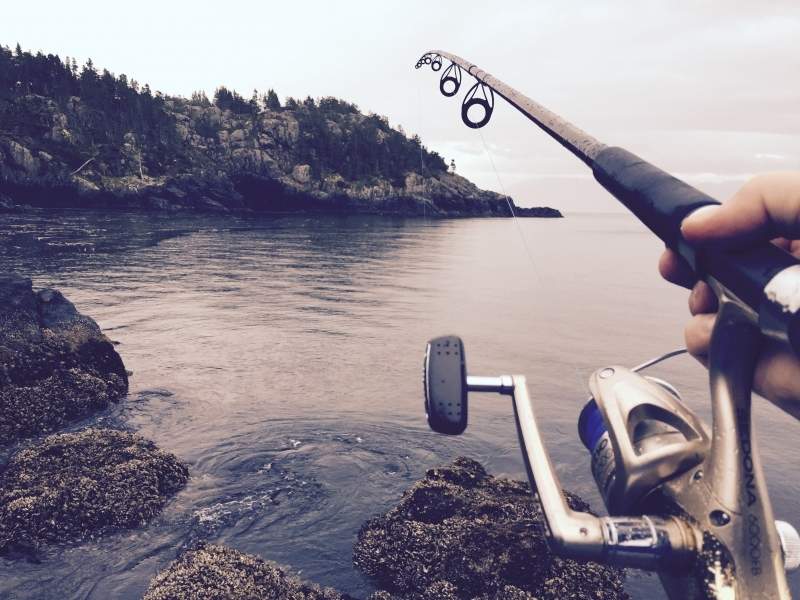
As the weather starts to warm, many of us start thinking about spending more time outdoors. Spring means cookouts, baseball games, and, for many, fishing with friends and family. If you have the itch to get out and fish, you may also have the itch to update your ancient fishing equipment.
Walking into a sporting goods store, you may be overwhelmed by all the tackle options: there are often hundreds of fishing rods for sale. Which is right for you? While there’s no single answer, we’ve compiled a list of things to consider before choosing the best fishing rod for your situation.
Consider Your Quarry
While it may seem counter-intuitive, a great place to start is thinking about what kind of fish you’ll be chasing. There’s an abundance of fishing opportunities across the United States, so you’ll have to determine which appeals to you. Will it be largemouth from a high-speed bass boat? Will you be running planer boards for walleye? Dabbing for crappie? Or, perhaps, you’re interested in chasing trout or smallmouth in pristine streams.
Each type of quarry may require different tackle. If you’re not sure which fish is available near you, check in with your local bait shop for ideas, join a fishing club for more information. Please understand that this isn’t to say that fishing poles can’t be used for multiple species of fish, but an understanding of what you’ll target will help you narrow down the selection.
Consider Your Preferred Method of Presentation
If you’ve reached this step, you have an idea what type of fish you’ll spend most of your time pursuing. At this point, you have three options: a fly rod, a baitcasting rod, or a spinning rod. A fly rod is a long , limber rod that casts a length of heavy line that ends in a long piece of light tapered monofilament or fluorocarbon. A fly, or imitation of an insect during one phase of its life cycle, is attached to the lighter leader line.
Baitcasting rods are available in a number of lengths but are typically geared toward using heavier lines and lures. A ballpark figure is that baitcasters will throw lures or sinkers no lighter than about 3/8 oz on lines with a tensile strength of no less than 10 lbs. The final type of rod is a spinning rod. Spinning rods are typically used for a lighter tackle, lures as light as 1/32 oz and 2 lb line. While there are heavy spinning rods and lighter casting rods, this should give you a rough idea of where to begin.
The Degree of Difficulty
Spinning rods are the most user-friendly of all the rod options. Spinning tackle can be mastered in an afternoon of practice. Baitcasting rods require a bit more finesse. When using baitcasters, reels, if not adjusted properly, have a tendency to let too much line off the spool, leading to the dreaded backlash. It takes a few weeks to get comfortable with a casting rod and casting technique can continually be refined.
Fly rods have the highest degree of difficulty. To deliver the line, fly casters must develop a back and forth cadence that loads and unloads the rod. This loading changes with the weight of the line, the length of the leader, and the size and weight of the fly it’s attached to. The basics of fly casting can be learned rather quickly; mastery can take a lifetime.
Materials, Action, and Budget Matter, Too
Perhaps the final considerations should revolve around your budget. Modern fishing rods are typically made from two materials: fiberglass and graphite. Fiberglass usually has a slower action, meaning the road flexes from the tip towards the rod handle. Graphite rods tend to have faster actions, meaning the rod bends less toward the handle.
Both types of rods, however, can be found with faster-or-slower-than-average actions. The best way to decide which you prefer is to try them out. Fiberglass rods are usually less expensive than graphite and more durable. Graphite rods are lighter and more expensive than fiberglass. They’re also more delicate.
Conclusion
So, which is the right rod for you? There’s not a universal answer. For most of us, a medium action rod will suit almost all freshwater fish when spooled with 10 lb line. For those after panfish, small trout, or small bass, a light or ultralight spinning rod with 4-6 lb line may be ideal. To target big fish, like pike or musky, a heavier action rod is absolutely necessary.
Rods are usually rated for lure weight; figure out the lures you’ll be throwing and then match those weight to a style of rod you like. Our best suggestion is to talk to others who fish, try plenty of rods out at the tackle shop, and read as much as you can. We hope this tutorial has helped you to understand the numerous choices you’ll face when purchasing a fishing rod. What suggestions would you make? What’s the most important consideration when buying a fishing rod? Let us know in the comments.
Find more details about fishing rods on Outdoorsbase.com